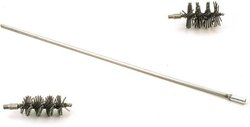What have you found to be the best way to clean turbulators? I took them out and used a brush with the shop vac turned on to catch the ash, but this is kind of slow.
Cleaning turbulators
- Thread starter ohbie1
- Start date
-
Active since 1995, Hearth.com is THE place on the internet for free information and advice about wood stoves, pellet stoves and other energy saving equipment.
We strive to provide opinions, articles, discussions and history related to Hearth Products and in a more general sense, energy issues.
We promote the EFFICIENT, RESPONSIBLE, CLEAN and SAFE use of all fuels, whether renewable or fossil.


